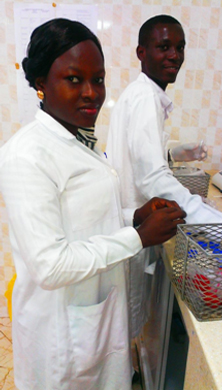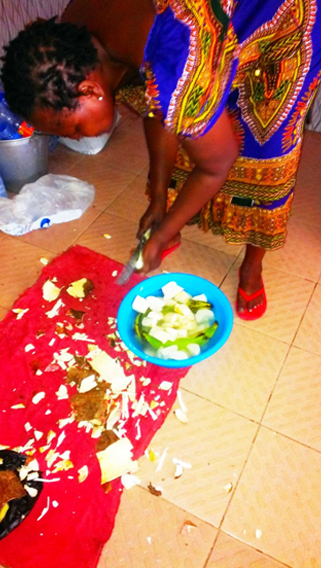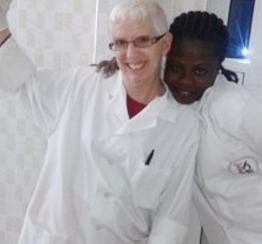It has long been a dream of mine to do a volunteer project in Africa using my career as a Medical Laboratory Technologist. The year 2017 would be the year to scratch that off my bucket list because, let’s face it, I am not getting any younger.
So, with some financial donations from HSAA (the union’s social-justice committee gave $800) and other help, I made this happen.
After researching and contacting various volunteer outfits, I contacted Volunteer BaseCamp and signed up for a project in Ghana. After several months of booking flights, visa application, immunizations, pharmacy visits to get medications for “just in case,” I arrived in the very hot city of Accra which has a population of about two million, on June 2. I stayed for a weekend of orientation, then it was off to Kumasi for my assignment at the Anniweh Medical Centre.
If I had to sum up my first and lasting impression of Ghana in one word, it would be “colourful.” Let me fill in some of that colour for you. Everywhere, you see people in their colourful native dress doing various outside activities; handwashing their laundry out of their wash basins (probably the same wash basin they just bathed in); brushing their teeth over the open sewer system that runs on both sides of the roads; people carrying their wares to sell on the top of their heads; tro-tros (the public transport system) with the helper hanging out the door shouting out the destination; and little shanty shops everywhere selling anything you could ever want. Schoolkids in their very colourful uniforms were off to school quite early. To that, add goats, dogs and chickens everywhere.
My first day of work, I was quite shocked to see that almost everything is washed and reused – slides, pipette tips, urine containers, reaction tubes.
The list of testing they did there is quite extensive; basic urines, CBCs, basic chemistry, hormone testing (PSAs and HCGs), TSH, T3, T4, hemoglobin electrophoresis, sickling screens and malaria screens with the density count. The chemistry analyzer has been broken for nine months, so all the chemistry is manually pipetted and then read on a spectrophotometer. That definitely brought me back to school days.
The bench technologist does about 10-20 malaria screens per day with Plasmodium Falciparum accounting for the majority of the malaria there. This is one of the biggest causes of infant deaths. Sickle cell is a major concern there, so all maternity patients are screened for this. One day there I picked up three positives, with one being a homozygous. The screening is done with sodium metabisulfite.
I also saw quite a few parasites. They have no computer system, so all results are recorded in scrapbooks. Once recorded, the results are written on the requisition and then handed to the secretary who types up a report.
All the phlebotomy is done with syringes. Sharps are disposed of in cardboard boxes.
Here is the irony; the laboratory is in a beautiful, relatively new building, but the hospital it serves is quite old and dark and dingy.

The female ward I went out to is accessed through a dark, wooden screen door, with 10-12 old metal frame beds lined up in a small room and one toilet and one sink. The nurse’s desk is an old metal desk and overhead there is a ceiling fan to cool the air. The ER department is a framed outdoor area with corrugated tin roof.
My main focus was to observe the workflow and then to tweak some of their maintenance, the quality control and their procedures, keeping in mind the limited resources
I was able to make a few recommendations for maintenance of the equipment and tweaking some of the procedures. Quality control was quite difficult as they really do not have access to commercial quality control, so the use of patient quality control is quite prevalent.

As I was working there, I realized that it was like a M*A*S*H mentality. The doctors are interested in getting a reasonable result; is it high or low; is it life-threatening, etc.
To sum up, I learned a great deal about the lives of the people and the passion they have to try to make their lives better. Help is needed, not in the form of human resources, but in the form of government investment in decent health-care equipment, facilities and infrastructures to get rid of the open sewer systems and to provide better hospital facilities.
I came back with more appreciation for running water, decent health-care facilities, closed sewer systems and more. I am very glad I had this opportunity to use my skills for a volunteer project in Africa.
